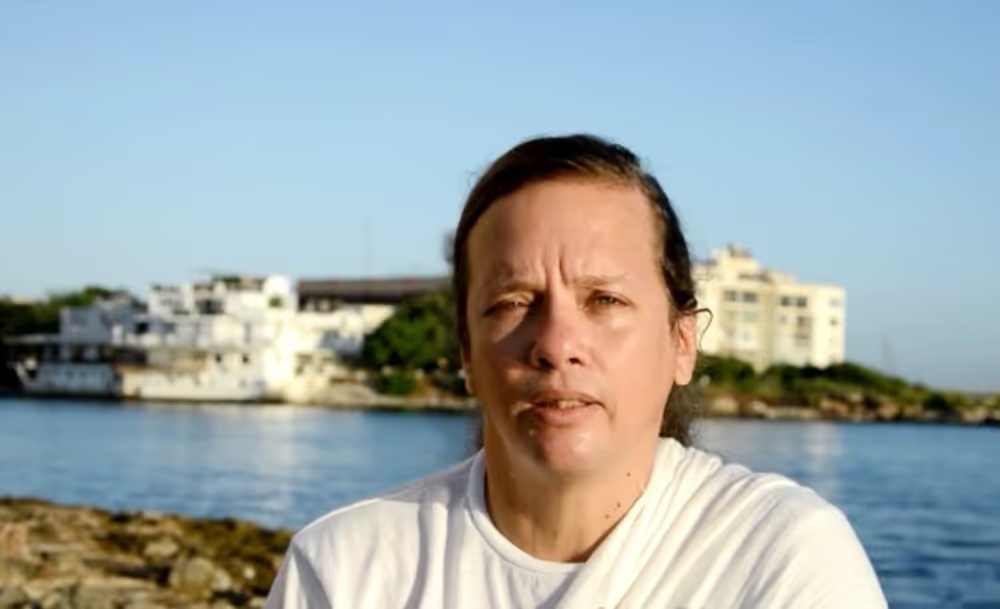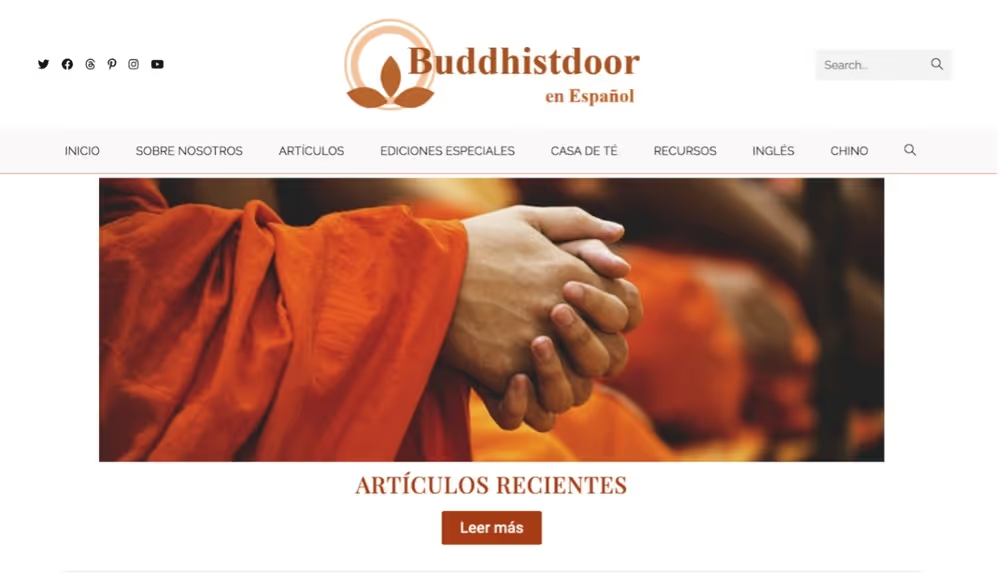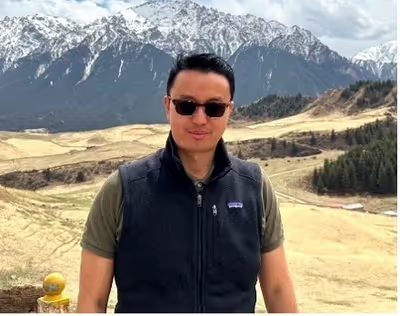
The term "Buddhism in the West" can be quite misleading. Too often, this general term refers to Buddhism in the English-speaking world, i.e., the United States, United Kingdom, Australia, Canada and New Zealand. But the West is not monolithic, and there are other European languages and cultural complexes that are interacting with Buddhism. The Spanish-speaking Buddhist sphere, from practitioners to scholars and interested seekers, is a rich, vibrant and diverse world that is just beginning to enter the global consciousness.
There are many reasons for the current embryonic state of Buddhism and Buddhist studies in Spain and Central and South America. Many of these reasons have historical roots, such as, for example, the fact that, despite its conquests in Central and South America in the 15th and 16th centuries, as well as its rule of the Philippines from 1565 to 1898, early modern Spain did not colonize any Buddhist-majority countries and, therefore, never engaged in any efforts to study the religious traditions of Asia through colonial administrators, traveling scholars, or state-supported archaeologists.
In the field of education, the Church in Spain applied much stricter policies than its Catholic counterparts elsewhere. In one famous example, Belgian scholars Louis de La Vallée Poussin (1869-1938) and Étienne Lamotte (1903-83) were experts in Buddhology, despite being Catholic and largely anti-Buddhist.
The nation-states that emerged after the Spanish-American wars of independence suffered growing pains and turbulence as they navigated the volatile world of the 19th century. Spain itself had been a declining imperial power since Napoleon, and the abdications, restorations and ongoing civil conflicts of the Bourbons led to the rise of Francisco Franco (1892-1975) in the 1930s, who installed a fascist dictatorship in Spain until the 1970s.
In general, the socio-cultural context in which Buddhism entered Spanish-speaking consciousness is quite different from the experience of the British in India or the French in Indochina. Until recently, there were no dictionaries or compendiums written in Spanish by Spanish counterparts of French sinologists such as Édouard Chavannes (1865-1918) or Paul Pelliot (1878-1949), nor archaeological surveys conducted by a Hispanic Aurel Stein. At the popular level, Spanish-speaking "adopters" who "went native" and converted to Buddhism were even rarer than American or British converts.
Academically, Buddhist studies in the Spanish-speaking world have been lagging behind. This is evident when compared to the Anglo-German, French-speaking, Japanese and Russian schools. The more mature schools of Buddhist studies developed throughout the 20th century without significant Spanish-speaking contributions until well after Franco. In general, it could be said that Buddhist studies has been a subject historically formed in Euro-American universities, with Spanish contributions absent.
Spain introduced a new constitution promoting freedom of religion in 1979. This was almost two centuries after William Jones (1746-94) of the Asiatic Society. Of course, before Franco's death in 1975, there were communities and individuals who made significant efforts within the constraints of the time, but the time for a real intellectual flowering came long after Buddhist discourse was firmly established by English-speaking countries.
Until now, the only website dedicated to covering Buddhist developments in the Spanish-speaking world has been Buddhistdoor en Español (BDE). Buddhistdoor's Spanish platform has been at the forefront in driving and shaping awareness about Buddhist developments in Spanish-speaking regions for both Spanish and non-Spanish readers. Since 2019, Barcelona-born Daniel Millet Gil, who holds a PhD in Buddhist Studies from the University of Hong Kong, has been bringing together this first online community of Spanish-speaking Buddhist writers. Therefore, it does not seem complacent to claim that the content of Buddhistdoor en Español contributors and columnists constitutes the most reliable resource on Buddhica Hispanica.

What do we mean by "Buddhica Hispanica"? When we speak of geography, we mean the region of the Americas south of the United States, from Central America to South America. We also mean Spain itself, although the European country is a fundamentally different society from its former colonial regions, just as those regions, now diverse and independent nation-states, are complex and culturally rich societies, distinct from each other.
Through translated articles and an ongoing series of posts on the BDG Tea House blog, we have been sharing, with the help of our friends at BDE, the wonders of the Spanish-speaking Buddhist world. We can discern the passion and fidelity to the Dharma in the teachings of pioneering teachers from different traditions founding centers in these countries, many for the first time, to the sincere and supportive sanghas growing in unknown places. We have been exploring the temples, monasteries and stupas being built throughout Central and South America, and talking with the scholars who help Spanish readers catch up in understanding the Dharma.
In the contemporary world, self-described Buddhists within the Spanish-speaking population represent an average of 0.1% of the population. However, it is growing and, in an ironic sense, has much room to innovate and develop, unlike the increasingly static Catholic practices with which people of Hispanic heritage culturally identify.
The Spanish-speaking world is, without a doubt, one of the most important Buddhist frontiers that a religious publication should take very seriously. This is for the edification not only of Spanish-speaking readers, but also of non-Hispanic audiences and communities.
To this end, our "Budismo Hispanohablante" series, along with selected articles from BDE, is exploring issues raised by Spanish-language website contributors, linking to the original Spanish-language articles, and contextualizing them in the wider world of Buddhist development in Spain or Latin America.
We have been covering an immense geographical range in the Hispanic world. Our methodology is twofold. First, we invite respected authors and knowledgeable scholars to offer Spanish readers a well-informed and balanced history of the development of Buddhism in the Spanish-speaking world. The accomplishments and publications of our writers are compelling, all with years of experience in their field. Many have PhDs and are researching and teaching at universities. Some of our regular contributors include, and this is by no means exhaustive, Cuban writer and scholar Dr. Douglas Calvo Gaínza, Spanish-Brazilian journalist Fina Iñiguez, Chilean scholar of China and ecology Dr. María Elvira Ríos Peñafiel, Mexican scholar Dr. Roberto Eduardo García Fernández, and many more.
Second, we use our sources on the ground and in our Buddhist networks to identify teachers who are having an impact on their communities. Some of these teachers, who may be monastic or lay, are themselves regular contributors. The gallery of these Dharma teachers is large and diverse, ranging from Zen master Master Denkō Mesa, based in Tenerife in the Canary Islands of Spain, Argentine monk Venerable Karma Tenpa, and the U.S.-based Bhante Sanathavihari. The traditions these masters embrace, from Theravada to Mahayana to Vajrayana, are as diverse as any Buddhist sphere, whether in traditionally Buddhist Asia or the English-speaking West.
Finally, the range of topics covered in BDE is also impressive. Precisely because Buddhism is relatively new and fresh in the Latin American and Spanish worlds, even more so than Buddhism in the English-speaking West, there is considerable space for reporting on a wide range of interests, including popular culture, literature and society in general.
For example, Dr. Millet is planning with the writers a special issue on the fascinating intersection between Buddhism and Ibero-American literature, with the goal of exploring how Buddhist teachings and practices have influenced Spanish-language narratives and poetry, thus fostering an enriching spiritual and cultural dialogue.
Dr. Millet also collaborates regularly with a Spanish organization called Coordinadora Catalana de Entidades Budistas, which organizes the Festival de Cine Budista de Cataluña, held every two years. This event has the advisory participation of the Buddhist Film Foundation (BFF), directed by Gaetano Maida. The success of the Catalan film festival, which brings Buddhist cinematography and films to a growing Spanish audience, indicates that the Spanish world, along with Latin American countries, is witnessing a deepening influence and interest in Buddhist arts and culture.
Karmic seeds are rarely grand or large at first, but eventually ripen into magnificent fruit. With this introductory article, we hope to offer a reminder of how potentially rich and limitless the Spanish-speaking world's news coverage can be. BDE is committed to impactful reporting on this Dharma frontier. Spanish-speaking Buddhist communities around the world deserve nothing less.
This article was originally published in BDG on February 14, 2025.
Links:
"Documentary: Dawn of Buddhism in Cuba (English subtitled version)."

Raymond Lam is a senior writer at Buddhistdoor Global and also plans, writes and edits its Tea House subsite. Born in Hong Kong, he graduated from Brisbane Grammar School, studied religion at the University of Queensland and earned a master's degree in Buddhist Studies at SOAS University of London. A lay Buddhist since 2008, he is president of the Hong Kong Dharma Support Society. He is also a consultant for the Atlas of Maritime Buddhism at the Visualization Research Centre at Hong Kong Baptist University.










